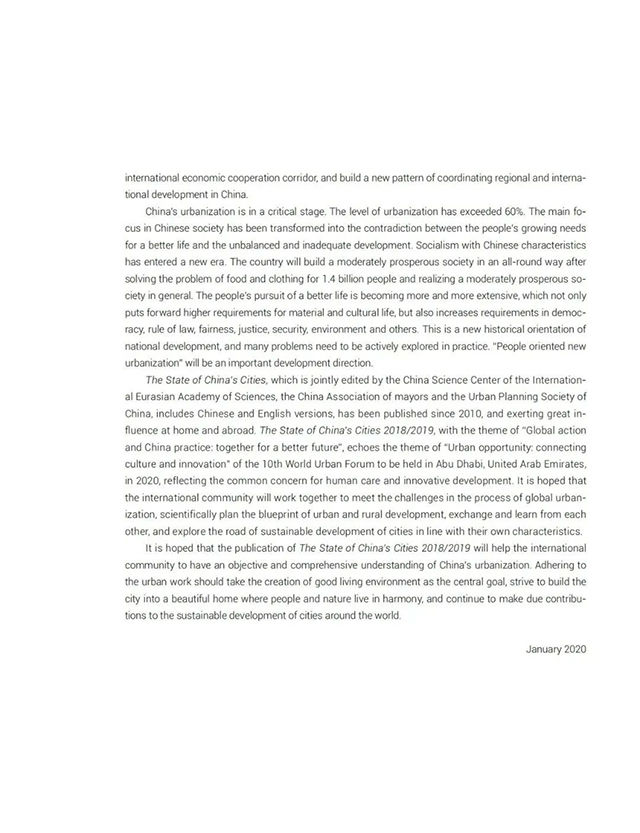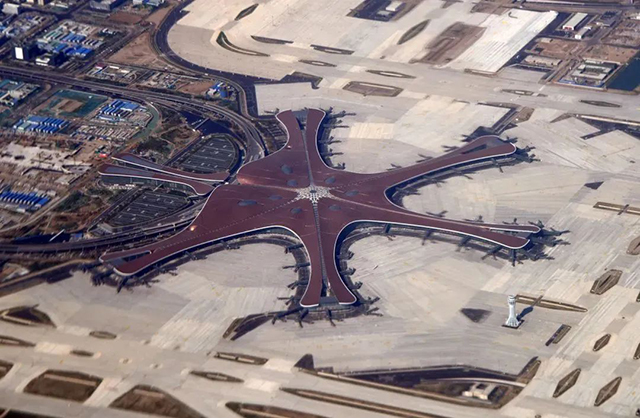
作者:国际欧亚科学院中国科学中心 中国市长协会
ISBN:9787112243327
出版社:中国建筑工业出版社
出版时间:2020年09月
所属类别:城乡规划与发展研究
第一章 中国城镇化进程
Chapter 1 Urbanization Process in China
1.1 城镇化顶层设计
1.1 Top-down Design of Urbanization
1.2 城镇化水平与质量
1.2 Urbanization Level and Quality
1.3 城镇化总体格局
1.3 Overall Pattern of Urbanization
1.4 城镇化发展方式
1.4 Approach to Urbanization Development
1.5 城镇化配套制度改革
1.5 Urbanization Supporting Systems Reformed
第二章 空间规划与城市治理
Chapter 2 Spatial Planning and Urban Governance
2.1 空间规划改革历程
2.1 The Process of Spatial Planning Reform
2.2 国土空间规划体系
2.2 Territorial Spatial Planning System
2.3 城市治理
2.3 Urban Governance
2.4 中国实践:城镇低效用地再开发
2.4 China Practice: Redevelopment of Underused Urban Land
第三章 城市基础设施
Chapter 3 Urban Infrastructure
3.1 国家相关规划与政策
3.1 Relevant National Plans and Policies
3.2 城市交通系统
3.2 Urban Transport System
3.3 城市水系统
3.3 Urban Water System
3.4 城市能源系统
3.4 Urban Energy System
3.5 城市环卫系统
3.5 Urban Sanitation System
3.6 城市通信系统
3.6 Urban Communication System
3.7 中国实践:智慧城市
3.7 China Practice:Smart City
第四章 生态文明与城市环境
Chapter 4 Ecological Civilization and the Urban Environment
4.1 生态文明建设
4.1 Ecological Progress
4.2 大气环境质量优化
4.2 Optimization of Ambient Air Quality
4.3 水环境质量优化
4.3 Optimization of Water Environment Quality
4.4 土壤环境质量整治
4.4 Soil Environmental Quality Remediation
4.5 中国方案:城市双修
4.5 China Program:Ecological Restoration and City Betterment
第五章 人文城市
Chapter 5 Culture City
5.1 植根历史的文化传承
5.1 Cultural Heritage Deeply Rooted in History
5.2 以人为本的公共空间
5.2 People-oriented Public Space
5.3 中国方案:工业遗产保护与再利用
5.3 China Program: Industrial Heritage Protection and Reuse
第六章 乡村振兴与扶贫攻坚
Chapter 6 Rural Revitalization and Poverty Alleviation
6.1 乡村振兴战略
6.1 Rural Revitalization Strategy
6.2 脱贫攻坚
6.2 Poverty Alleviation
6.3 改善农村人居环境
6.3 Improving Rural Living Environment
6.4 小城镇建设与特色化发展
6.4 Small Cities and Towns Construction and Characteristic Development
6.5 中国乡村实践
6.5 China’s Rural Practice
附录 1 中国工业遗产保护名录
Appendix I China Industrial Heritage Protection List
附录 2 中国 297 个地级及以上城市基本数据(2016 年)
Appendix II Basic Data of China’s 297 Cities at and above Perfecture Level (2016)
关于中国 297 个地级及以上城市基本数据( 2016 年) 的说明
Notes to the Basic Data of China’s 297 Cities at and above Prefecture Level (2016)








第一章 中国城镇化进程
Chapter 1 Urbanization Process in China
为应对城镇化挑战,中国遵循国际社会倡导的可持续发展理念和目标,将生态文明思想作为城乡发展的指导思想和行动指南,进一步强化以人民为中心的执政理念,树立了创新、协调、绿色、开放、共享新发展理念,转变城市发展方式,优化城镇化总体格局,坚持乡村振兴和城镇化双轮驱动,重构国土空间治理体系。
In order to meet the challenges presented by urbanization, China has followed sustainable development concepts and goals advocated by the international community, and has regarded thoughts of ecological civilization as the guiding ideology and action model for urban and rural development. It has further strengthened the people-centered governance concept; and established new development concepts in innovation, coordination, ecology, openness, and sharing; has transformed urban development patterns, optimized the overall pattern of urbanization, and also adhered to the ‘two-wheel drive engine’ approach, i.e. rural revitalization and urbanization while simultaneously reconstructing the governance system for territorial space.

第二章 空间规划与城市治理
Chapter 2 Spatial Planning and Urban Governance
新的国土空间规划体系以建设美丽中国、实现高质量发展和高品质生活、促进国家治理体系和治理能力现代化为总目标。未来365bet现金网_365体育亚洲官方登录_365bet足球正网平台将作为国土空间规划的一部分而继续发挥其治理效能,国土空间规划也将成为空间治理和城市治理的重要工具。
The new spatial planning system is aimed at building a beautiful China, achieving high-quality development and high-quality life, and promoting governance capacity and the modernization of the national governance system. Future urban planning will continue to exert its governance effectiveness as part of this territorial spatial planning, and likewise, spatial planning will also become an important tool for the spatial governance as well as urban governance.

第三章 城市基础设施
Chapter 3 Urban Infrastructure
为促进城市基础设施的发展,中国坚持规划引领,编制了全国城市市政基础设施建设“十三五”规划等相关规划,对基础设施发展谋篇布局;并通过一系列措施,促进了交通设施、水设施、能源设施、环卫设施的高质量发展,更好地满足了人民群众对美好生活的需求,支撑了新型城镇化的发展。
In order to promote the development of urban infrastructure, China persists in planning and guidance, and thus compiled relevant plans including the 13th Five-Year Plan for National Urban Municipal Infrastructure Development, which lays out plans for infrastructure development. This directive promotes high-quality development of transport facilities, water facilities, energy facilities and environmental sanitation facilities through a series of measures to better meet the needs of the people in the pursuit of a better life and, therefore, supports the development of new urbanization.
